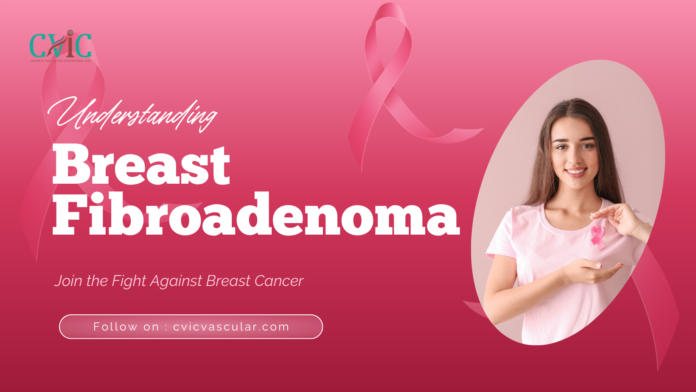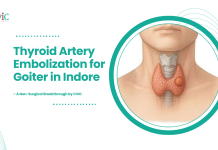Introduction
Breast health is a topic of great concern for women of all ages. While breast cancer often takes the center stage in discussions on breast health, there are other non-cancerous conditions that can affect the breasts. One of these conditions is breast fibroadenoma, a benign (non-cancerous) breast tumor. In this comprehensive guide, we’ll delve into breast fibroadenoma, breaking down what it is, its causes, symptoms, how it’s diagnosed, and the various treatment options available.
What Is Breast Fibroadenoma?
Breast fibroadenoma, often referred to as fibroadenoma, is a common benign breast tumor. It is characterized by the presence of solid, firm, and rubbery lumps in the breast. Fibroadenomas are usually painless, though they can sometimes be tender to the touch. These lumps are made up of both glandular and connective tissue. The exact cause of fibroadenomas remains uncertain, but they are thought to develop from the milk-producing glandular tissue in the breast.
Causes of Breast Fibroadenoma
The exact causes of breast fibroadenoma are not completely understood, but there are several factors that may contribute to their development:
- Hormonal Changes: Hormonal fluctuations, particularly those related to the menstrual cycle, are believed to play a role in the development of fibroadenomas. They are more common in women of reproductive age and often decrease in size after menopause.
- Estrogen Sensitivity: Some studies suggest that estrogen may influence the growth of fibroadenomas. Women with estrogen-sensitive breast tissue may be more prone to developing these benign tumors.
- Genetics: There is evidence to suggest that genetics may play a role in the development of fibroadenomas. If a close family member has a history of fibroadenomas, you may have an increased risk.
- Reproductive History: Women who have not given birth or who have had their first child later in life may have a higher risk of developing fibroadenomas.
Symptoms of Breast Fibroadenoma
Fibroadenomas often present without any noticeable symptoms, making them difficult to detect without a clinical examination or imaging studies. However, some women may experience the following symptoms if they have a fibroadenoma:
- Breast Lump: The most common symptom of fibroadenoma is the presence of a solid, well-defined lump in the breast. These lumps are typically painless but can be tender in some cases.
- Change in Breast Size or Shape: Some fibroadenomas can cause the affected breast to appear larger or change in shape due to their size.
- Breast Pain or Discomfort: Although most fibroadenomas are not painful, some women may experience mild discomfort or tenderness around the lump, especially just before their menstrual period.
- Mobility: Fibroadenomas are often movable within the breast tissue, which means they can be shifted or moved around under the skin.
- Change in Size: In some cases, fibroadenomas may grow in size over time. However, they can also remain the same size or even decrease.
Diagnosing Breast Fibroadenoma
The diagnosis of breast fibroadenoma involves a combination of clinical examination, imaging studies, and sometimes a biopsy to confirm the nature of the lump. Here’s how the diagnostic process typically unfolds:
Clinical Examination: Your healthcare provider will start with a physical examination of your breasts. They will check for any lumps, changes in size or shape, and any other abnormalities.
Imaging Studies:
a. Mammogram: A mammogram is an X-ray of the breast that can help identify the characteristics of the lump. Fibroadenomas typically appear as well-defined, round or oval masses on mammograms.
b. Ultrasound: An ultrasound uses sound waves to create images of the breast tissue. It can provide additional information about the lump’s texture and consistency. Fibroadenomas typically appear as solid, well-circumscribed masses on ultrasound.
Biopsy:
a. Fine Needle Aspiration (FNA): In an FNA, a thin, hollow needle is used to withdraw a sample of cells from the lump. Fibroadenomas typically yield benign results.
b. Core Needle Biopsy: In a core needle biopsy, a larger needle is used to remove a small core of tissue from the lump. This provides a more substantial sample for examination.
c. Surgical Biopsy: In some cases, a surgical biopsy may be necessary to remove the entire fibroadenoma and examine it more closely.
Once a biopsy confirms that the lump is indeed a fibroadenoma and not cancerous, your healthcare provider will discuss appropriate management and treatment options with you.
Treatment Options for Breast Fibroadenoma
The management of breast fibroadenoma depends on various factors, including the size of the lump, its growth pattern, and the individual’s symptoms and preferences. Here are the most common treatment options:
Observation: If the fibroadenoma is small, stable in size, and not causing any discomfort, your healthcare provider may recommend a “watch and wait” approach. This involves regular follow-up examinations to monitor the lump’s size and changes.
Medication: In some cases, hormonal therapy, such as birth control pills or hormone-regulating medications, may be prescribed to help shrink or stabilize the fibroadenoma.
Minimally Invasive Procedures:
a. Lumpectomy: A lumpectomy is a surgical procedure that involves the removal of the fibroadenoma.
b. Cryoablation: Cryoablation is a minimally invasive technique that uses extreme cold to destroy the fibroadenoma.
Surgical Removal: If a fibroadenoma continues to grow or causes pain, surgical removal may be recommended. This procedure is known as a wide local excision or a partial mastectomy.
Follow-up Care: Regardless of the treatment chosen, regular follow-up appointments are essential to monitor for any changes in the breast tissue. This is especially important for women who opt for observation or medication-based treatments.
Living with Breast Fibroadenoma
Living with a breast fibroadenoma can be a source of concern and anxiety. However, it’s important to remember that fibroadenomas are benign and do not increase the risk of breast cancer. Here are some tips for living with a breast fibroadenoma:
- Regular Self-Exams: Perform monthly breast self-exams to become familiar with the normal texture and appearance of your breast tissue. This can help you detect any changes early.
- Follow-Up Appointments: Attend all scheduled follow-up appointments with your healthcare provider to monitor the fibroadenoma and ensure that it’s not causing any issues.
- Healthy Lifestyle: Maintain a healthy lifestyle by eating a balanced diet, engaging in regular physical activity, and managing stress. These habits can contribute to overall breast health.
- Breast Health Education: Educate yourself about breast health and conditions like fibroadenoma. Knowledge empowers you to make informed decisions and reduces anxiety.
Conclusion
Breast fibroadenoma is a common benign breast tumor that affects many women. The first step is to seek medical evaluation and diagnosis, as it’s crucial to rule out any serious underlying conditions.
Whether you choose observation, medication, or a surgical approach, the goal is to ensure your peace of mind and overall breast health. Regular self-exams and follow-up appointments are essential for monitoring any changes in your breast tissue and addressing them promptly.
It’s important to remember that every individual’s experience with breast fibroadenoma is unique. If you have concerns or questions about your breast health, don’t hesitate to reach out to your healthcare provider, who can provide personalized guidance and support. With the right care and attention, you can manage breast fibroadenoma and maintain your breast health with confidence.
Our Doctors –
Dedicated IR Center for Vascular Problems in Madhya Pradesh
DR. SHAILESH GUPTA
MD, PDCC (INTERVENTIONAL RADIOLOGY) Consultant & Co-Director CVIC (Center Of Vascular & Interventional Care)
DR. ALOK KUMAR UDIYA
MD Radiology, PDCC (Neurointervention Radiology), PDCC ( HPB Intervention Radiology) FINR (Switzerland) & EBIR
Endovascular Surgeon & Consultant Interventional Neuroradiologist at Care CHL Hospital, Indore Co-director CVIC( center for vascular and interventional care)
DR. NISHANT BHARGAVA
Consultant Intervention Radiologist
MD Radiology, PDCC ( Neurointervention Radiology), FINR ( Fellowship in Neurointervention Radiology)
Co-director CVIC(Center for Vascular and Interventional Care)
Contact Details –
Phone no.
0731 4675670
+91 9827760073
Facebook
https://www.facebook.com/profile.php?id=100092538633553&mibextid=ZbWKwL
Instagram
https://instagram.com/cvic_center?igshid=ZGUzMzM3NWJiOQ==
Google My business
https://g.co/kgs/DrdV3T
YouTube
https://www.youtube.com/channel/UCP5TH5e4iQZkpDUgnLsgZhw
Pinterest
https://pin.it/5DzpX5Z
Twitter
https://x.com/cviccenter?t=01TclSrLFdu0K2re0Gs96w&s=08
LINKEDIN
https://www.linkedin.com/company/center-of-vascular-interventional-care/
Location –
Read More –
Understanding Venous Ulcers: Causes, Symptoms, Treatment, and Prevention – https://cvicvascular.com/understanding-venous-ulcers-causes-symptoms-treatment-and-prevention/
Microwave Ablation: Harnessing Heat for Health – https://cvicvascular.com/microwave-ablation-harnessing-heat-for-health/
Laser Treatment for Varicose Veins: A Comprehensive Guide – https://cvicvascular.com/laser-treatment-for-varicose-veins-a-comprehensive-guide/




